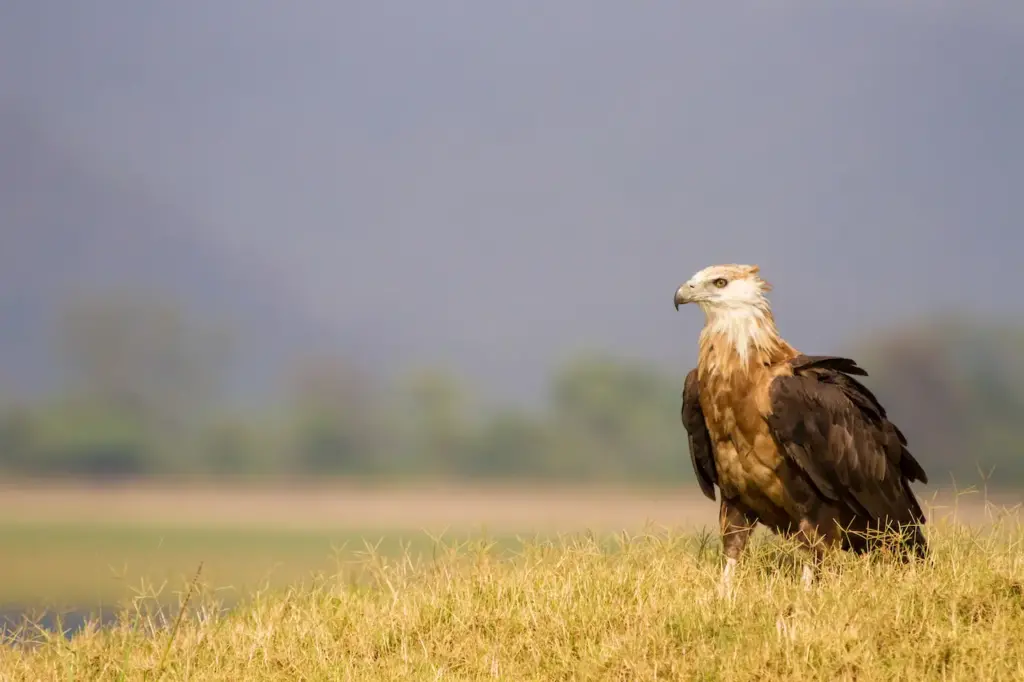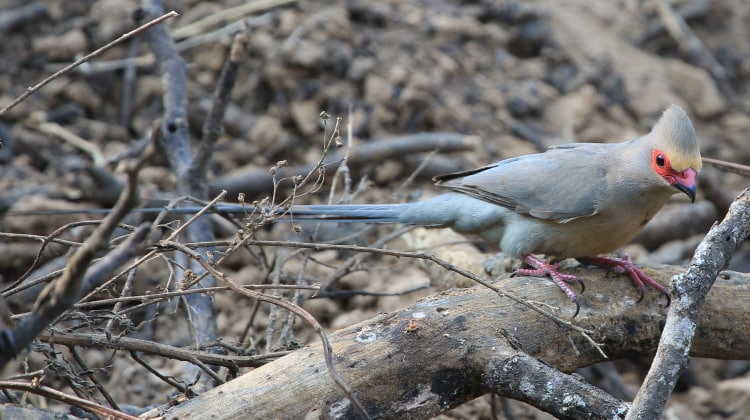Pallas’s Sea-eagle (Haliaeetus leucoryphus)
Pallas’s Fish-eagles (Haliaeetus leucoryphus), also known as Pallas’s Sea-eagles or Band-Tailed Fish-eagle, is a large, brownish sea-eagle. It breeds in Central Asia, between the Caspian Sea and the Yellow Sea, from Kazakhstan and Mongolia to the Himalayas and northern India. It is partially migratory, with central Asian birds wintering among the southern Asian birds in northern India, and also further west to the Persian Gulf.

Description
Pallas’s Sea-eagles have a light brown hood over a white face. The wings are dark brown and the back rufous, darker underneath. The tail is black with a wide, distinctive white stripe. Underwings have a white band. Juveniles are overall darker with no band on the tail. It is usually 72-84 cm (28-33 in) in length with a wingspan of 180–205 cm (71-81 in). Females, at 2.1-3.7 kg (4.6-8.2 lbs), are slightly larger than males, at 2-3.3 kg (4.4-7.3 lbs).
Diet / Feeding
Its diet consists primarily of large freshwater fish.
Systematics
This species is the hardest-to-place sea-eagle. Among the species of its genus, it has no close living relatives. mtDNA cytochrome b sequence data is unable to reliably suggest a phylogenetic place for it among the sea-eagles. However, some information can be drawn from the molecular data, and especially from morphology and biogeography:
This species retains the ancestral dark eye, bill, and talons of the first sea-eagles, shared with the older tropical lineage. It is peculiar insofar as it has a black band at the end of the tail in adult birds, similar to juvenile Madagascar Fish-eagles (which look like a smaller, darker version of this bird, but are not very closely related). Its distribution indicates that this species evolved fairly independently of other sea-eagle lineages, but the molecular data tentatively suggests it is possibly closer to the Holarctic species.(Wink et al. 1996)
It diverged from its common ancestor with other species soon after the Holarctic and the tropical lineages split. Dependent on the interpretation of a possible Early Oligocene sea-eagle fossil from Egypt, this happened either at the very start or the end of the Oligocene, somewhere between 34 and 25 mya. Apparently, this species achieved its current, essentially land-locked distribution peculiar among sea-eagles due to the collision of Indian Plate with Eurasia.

Thus, although the exact timing is not well resolved, it is quite certain that Pallas’s Sea-eagles are the descendants of those sea-eagles which inhabited the northwestern Bay of Bengal when it was a shallow straits separating mainland Asia from India, which still was an island at that time.
Conservation status
The conservation status of Pallas’ Fish-eagle is Vulnerable, with a population of about 2,500 to 10,000 remaining. Besides direct persecution, humans contribute to the decline of this species through habitat degradation, pollution, and draining or overfishing lakes. In India, the eagle is also threatened by the spread of water hyacinth (Eichhornia spp.) which spread over lakes and make finding prey difficult. The large range is deceptive, as Pallas’s Fish-eagle is rare and isolated throughout its territory and may not breed in large areas of it.
Birds of Prey … The Sport of Falconry
Copyright: Wikipedia. This article is licensed under the GNU Free Documentation License. It uses material from Wikipedia.org … Additional information and photos added by Avianweb.
Please Note: The articles or images on this page are the sole property of the authors or photographers. Please contact them directly with respect to any copyright or licensing questions. Thank you.





